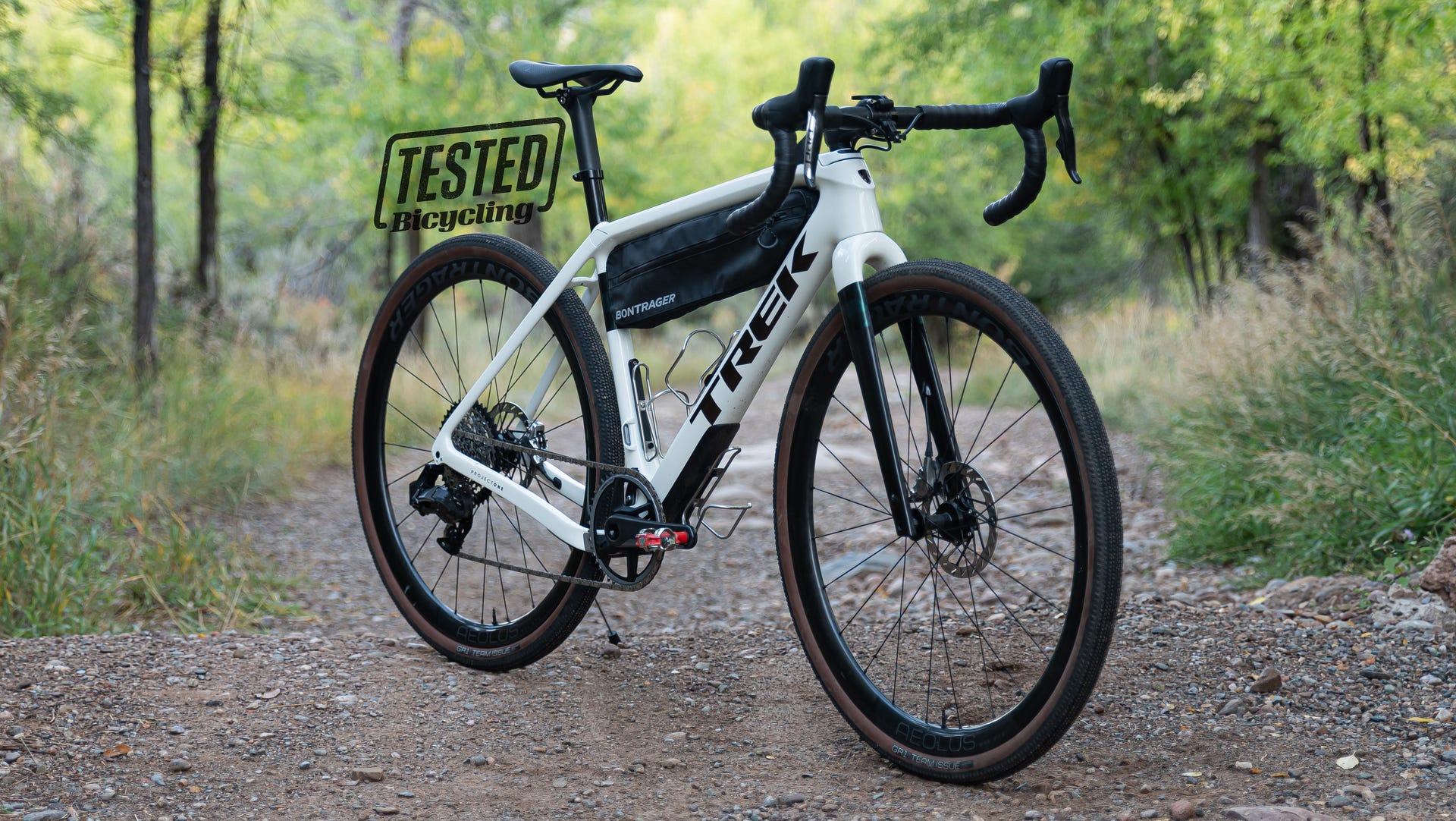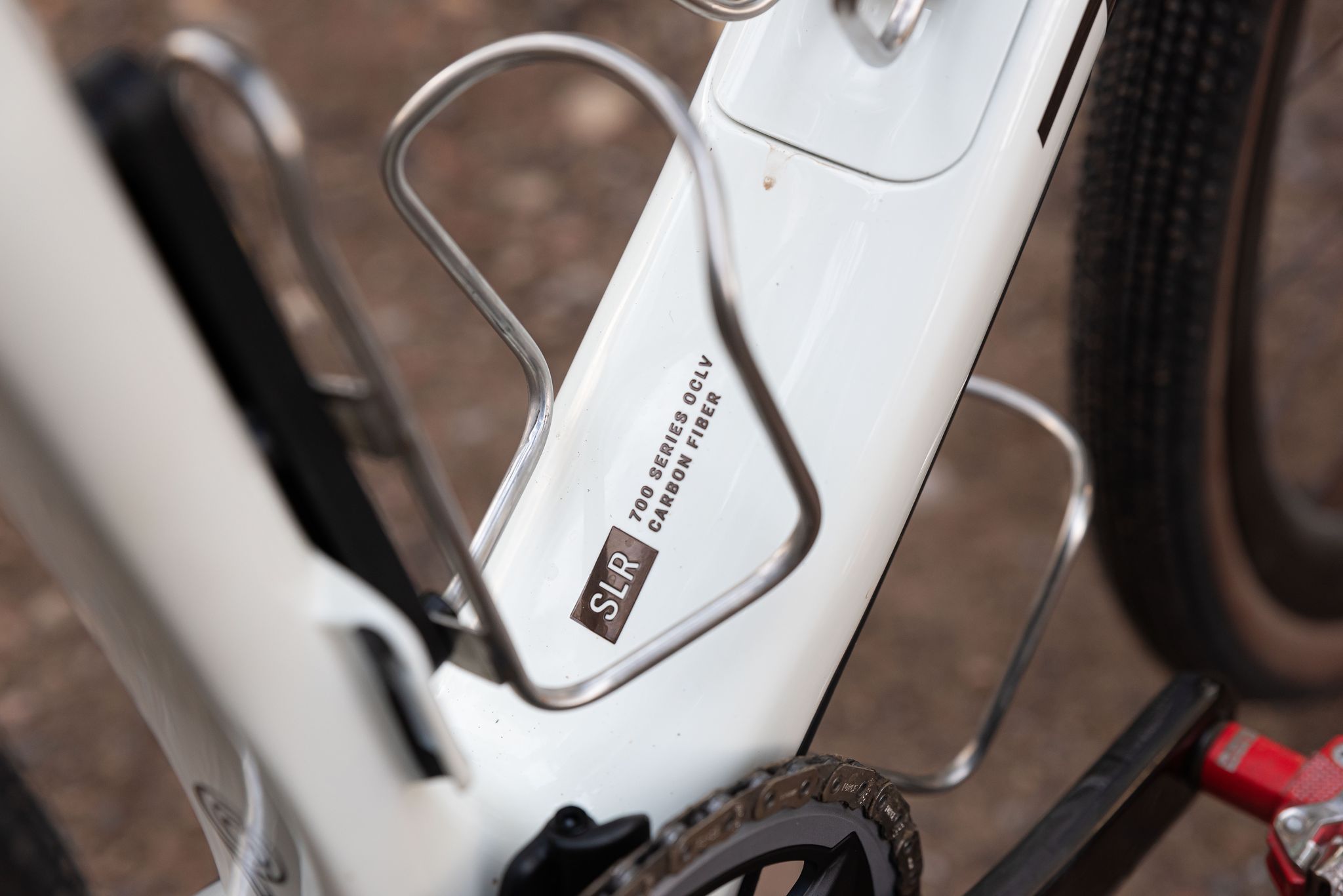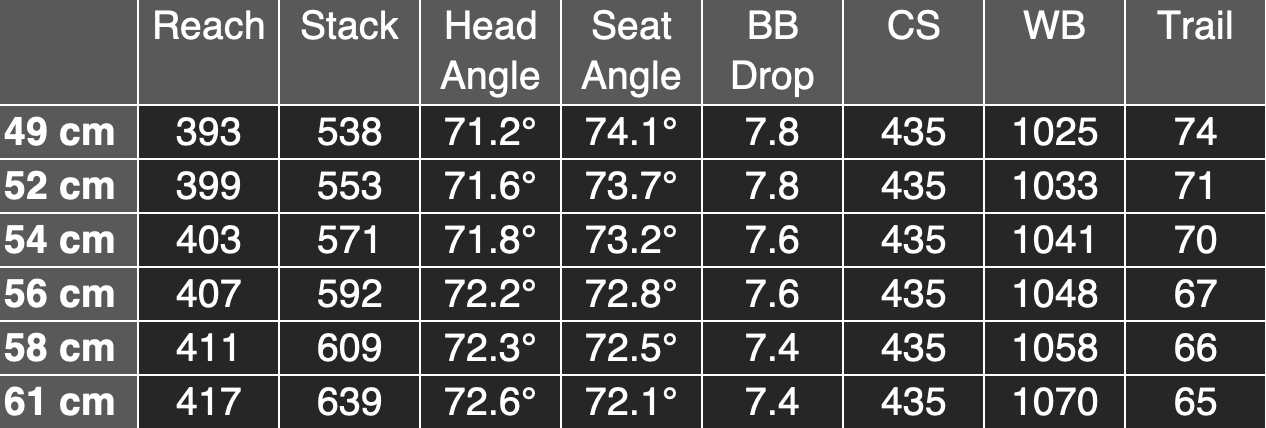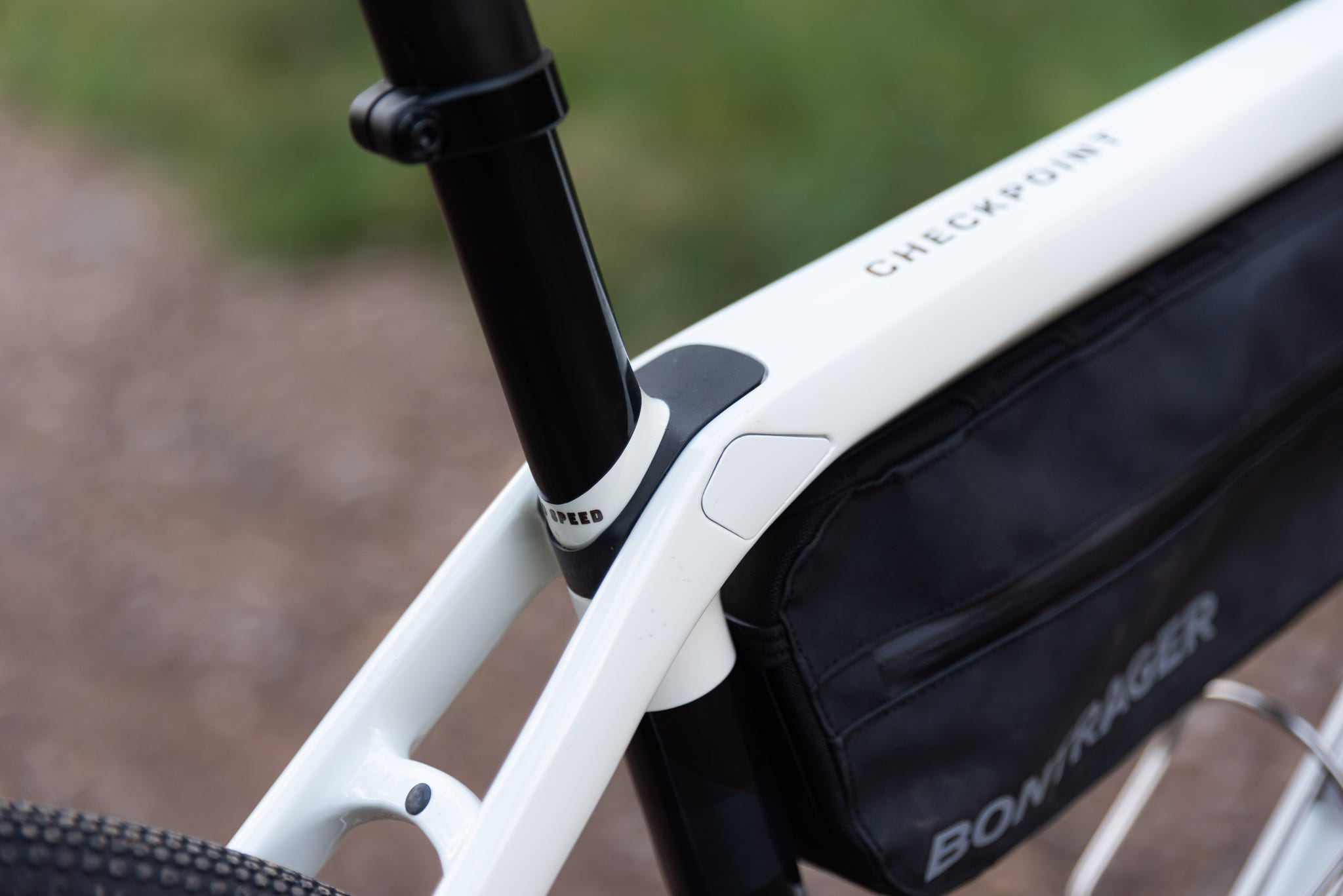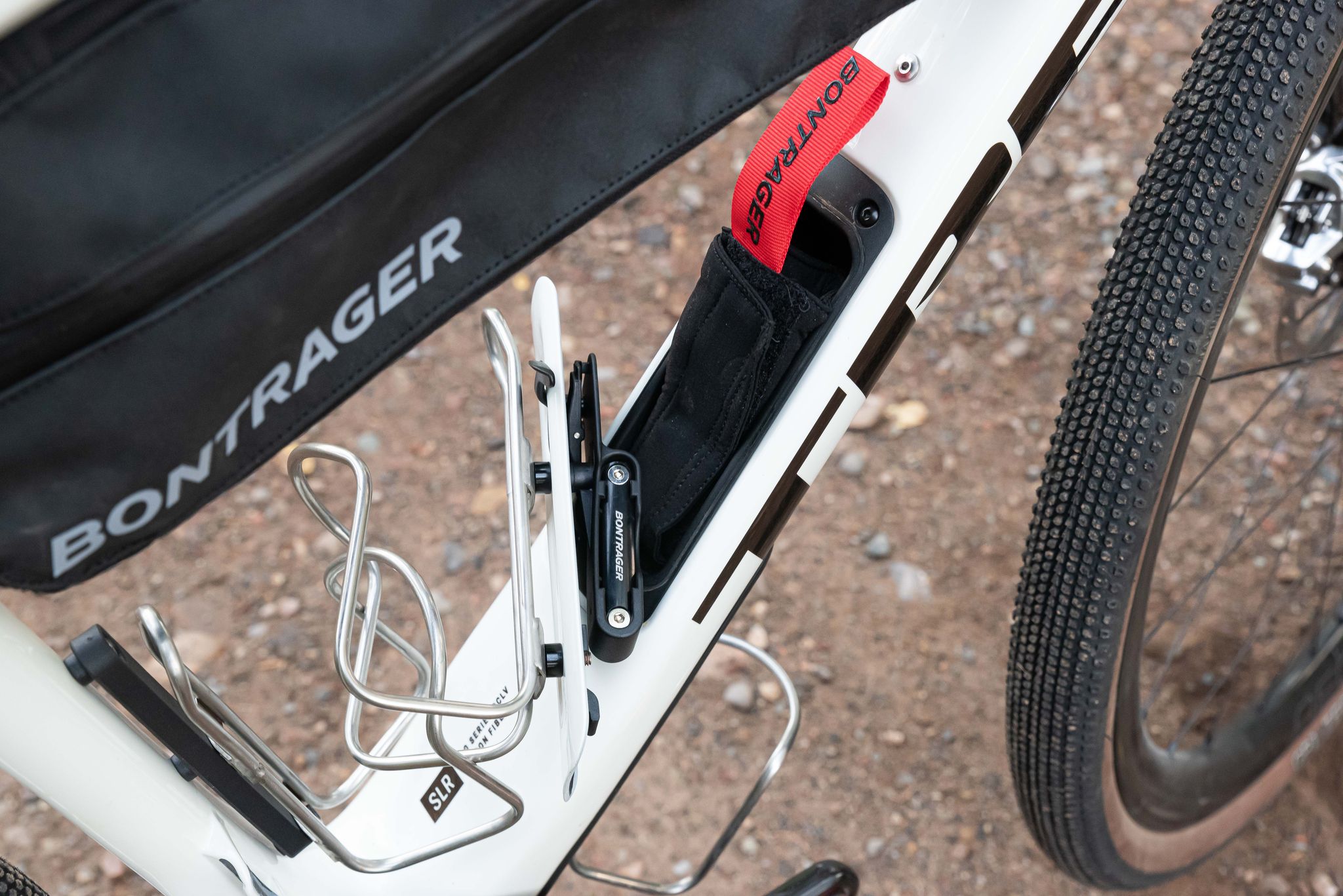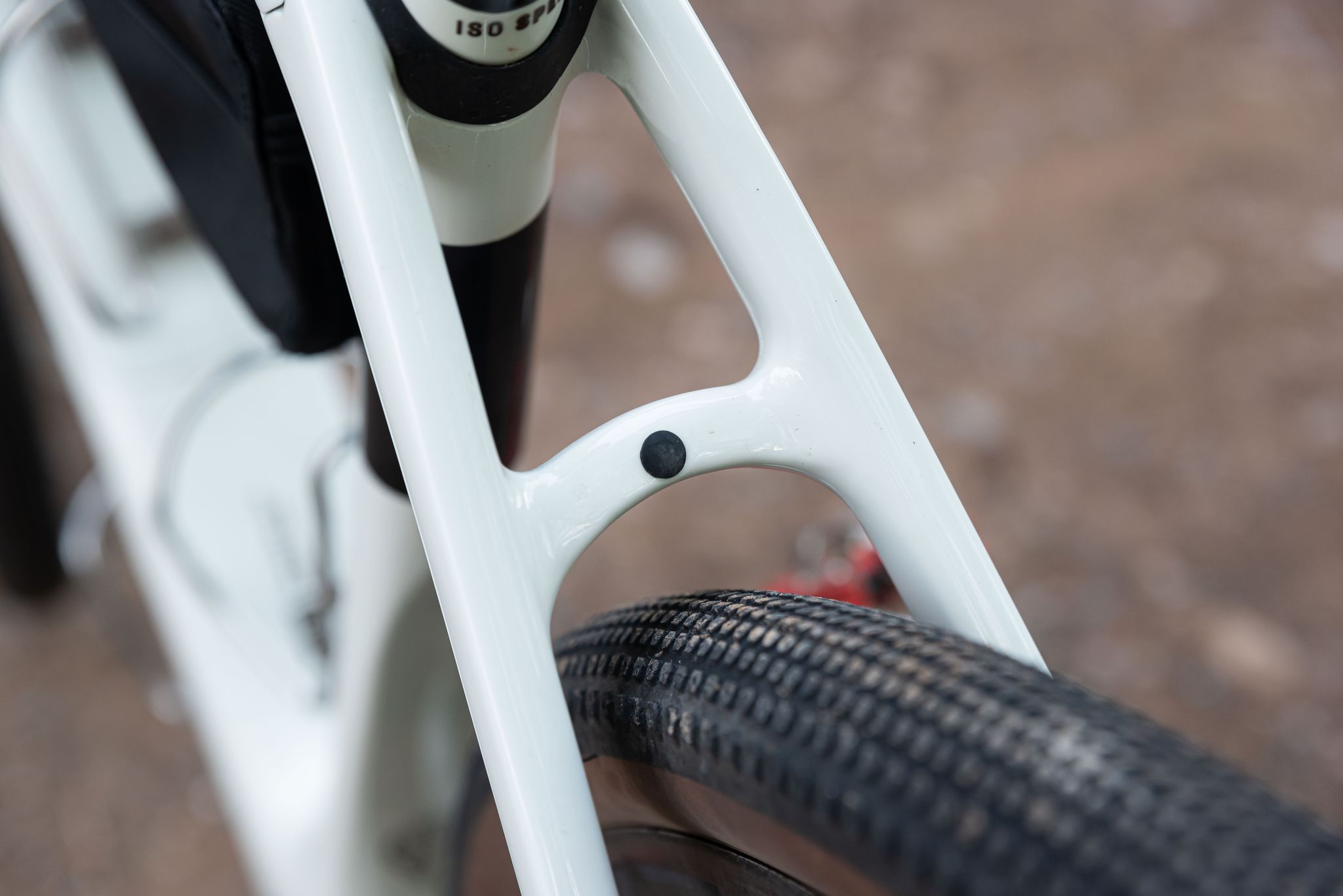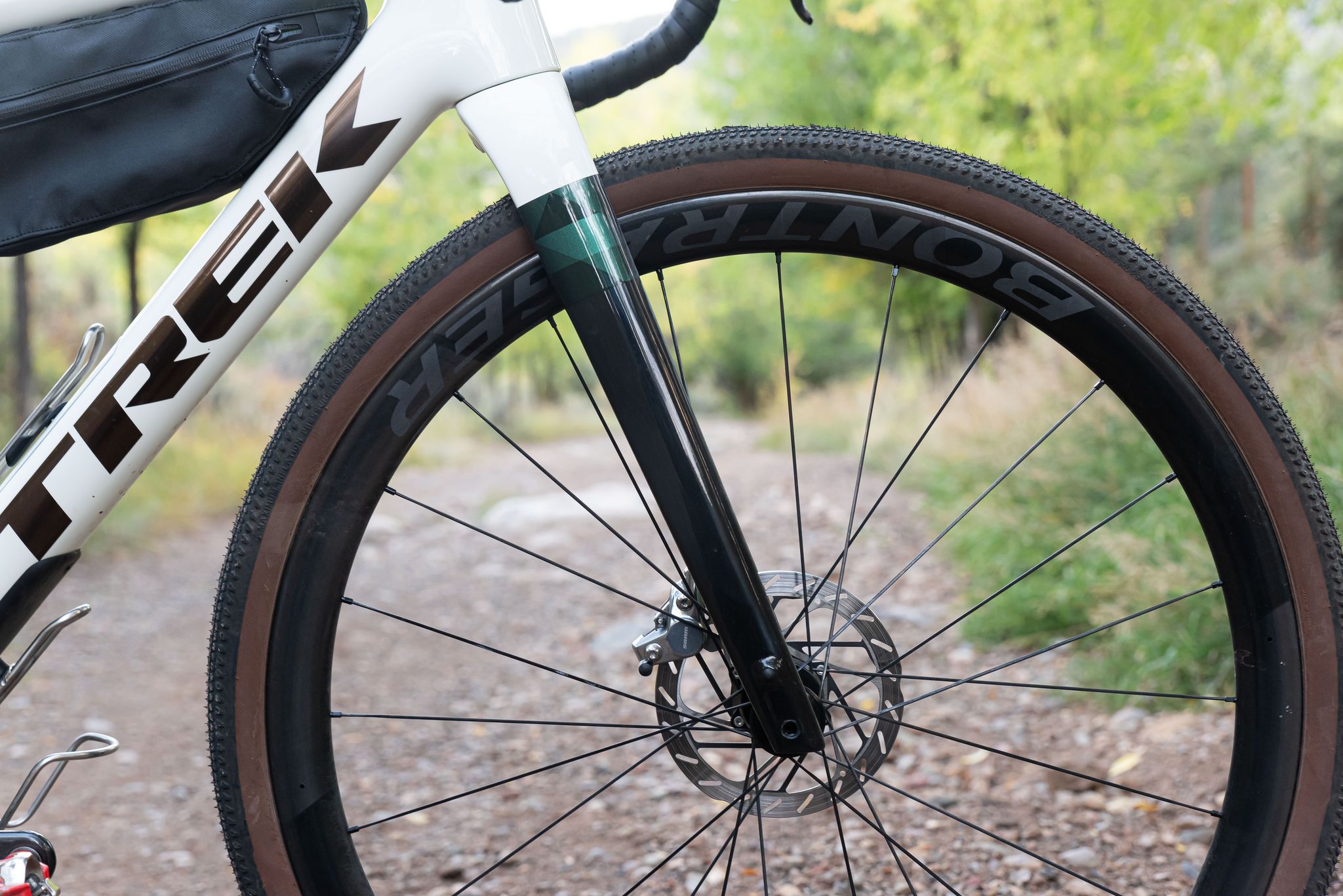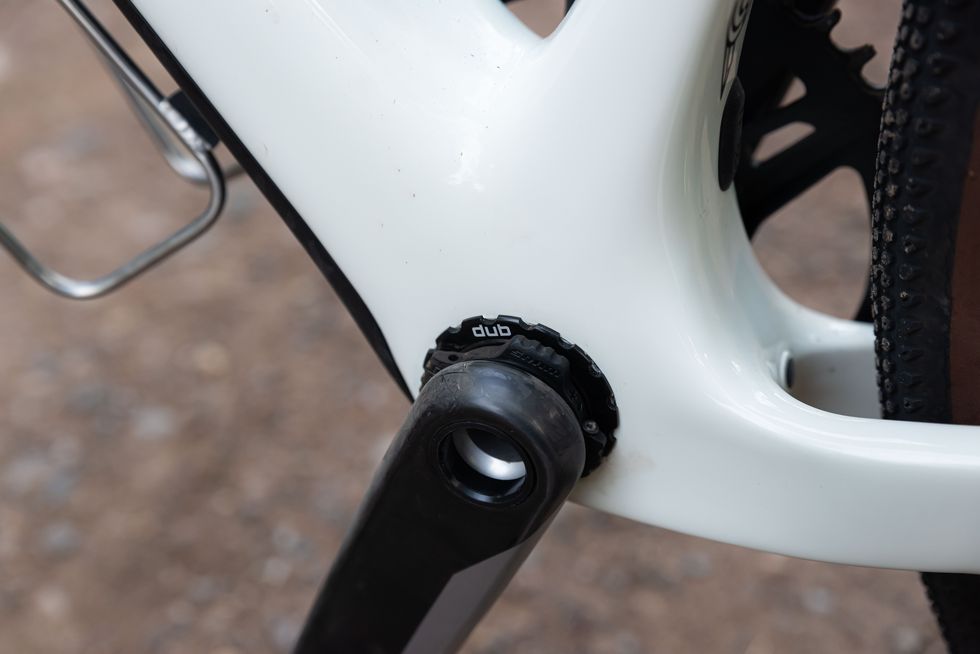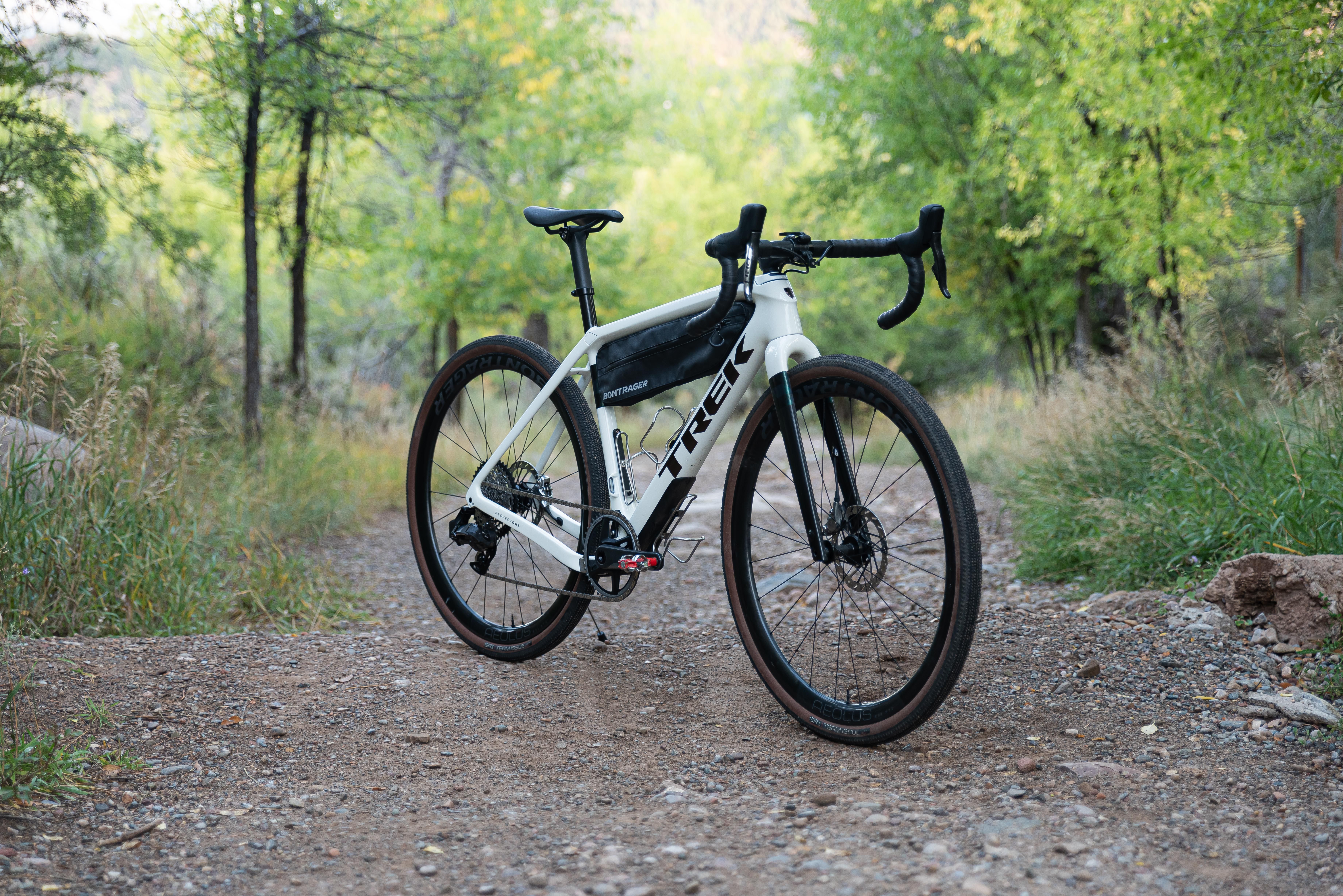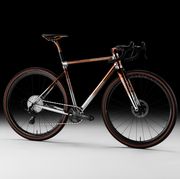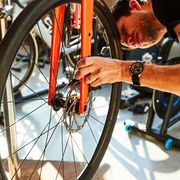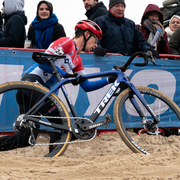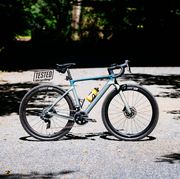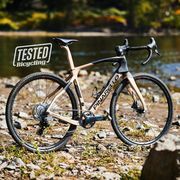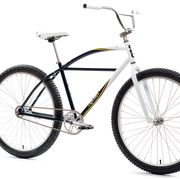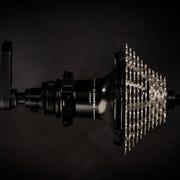The Takeaway: A great bike gets better, with geometry updates suited to the evolution of gravel.
- Two centimeters longer reach and front center on all sizes
- One centimeter longer chainstays
- New race-oriented SLR platform
- Additional cargo mounts
Price: $12,000 (SLR 9, as tested)
Weight: 17.8 lb. (Size 54cm)
Trek’s gravel loving Checkpoint is all new front to rear, with new geometry (covered below) and features for the ever-evolving world of gravel riding. That evolution is why Trek differentiated the three complete bike platforms—SLR, SL, and ALR—for different kinds of gravel riders. I go into more depth below, but the short version is: SLR = race; SL = all-around, ALR = utility.
Cargo and bags are a big part of the gravel experience, so the new Checkpoint has frame bag mounts inside the front triangle. This mates up with a new direct mount Bontrager frame bag—a unique bag for every Checkpoint size—that’s part of that brand’s new Adventure Bag collection. The frame also has a mount for a top tube bag. All sizes of the Checkpoint have a bottle mount under the downtube, a bottle mount on the seat tube and at least one on the downtube: Sizes 54cm and up have two bottle mounts on the downtube. SL and ALR models get three pack mounts on the fork for additional water or cargo capacity. Hoses and housing run internally, which keeps them out of the way of straps and bags. All models get mudguard mounts as well. SL and SLR frames get in frame storage similar to the third generation Domane.
Threaded T47 bottom brackets now grace all Checkpoint frames, but Trek has done away with the sliding dropouts found on the previous generation Checkpoint. All eight builds get gravel gearing and clutch-style rear derailleurs (Shimano GRX or SRAM eTap AXS), as well as 40mm tubeless ready tires and tubeless ready rims. All models, and all sizes, can fit up to 45mm tires with plenty of mud clearance; which means riders in dry conditions can fit in even bigger tires. If you choose, you can fit the Checkpoint with 650b wheels—all models and all sizes come stock with 700c wheels—which bumps tire clearance up to 53mm (2.1 inches).
In the press release, Trek makes mention of “Émonda-inspired aero tube shapes,” without providing any wind tunnel data. My suspicion is the tube shapes do save a few watts, though Trek isn’t leaning into gravel aero as much as 3T does with its Exploro RaceMax.
Trek Checkpoint — Geometry
Geometry is where the new Checkpoint sees the biggest change. While there are three Checkpoint frame platforms (outlined below), all three share the same, all new, geometry (see table above).
The overall theme to the geometry updates is “more progressive.” Trek took a page from the mountain bike playbook and stretched all sizes of the frame’s reach and front center by about two centimeters. Trek now fits shorter stems and shorter-reach bars to mitigate cockpit length changes. Chainstays on the frame grow by a centimeter (now 435mm on all sizes). Trail is also longer (about six millimeters) even though head angles remain about the same—new fork offset is 45mm, old was 49mm—and wheelbase grows as well. Frame stack bumps up a touch too.
Jordan Roessingh, Trek’s director of road product, says the new geometry aids stability, “It’s a longer bike, so whether you’re doing long Unbound type stuff where you’re just pointing the bike straight or you’re doing high speed stuff on gravel descents in the mountains, we believe this geometry lends itself to confidence. Getting that wheel out in front of you also unweights it makes you feel a lot more confident when you’re doing steep technical stuff—you don’t feel like you’re going to go over the bar. That front wheel is really easy to unweight and allows it to roll over a lot more stuff.”
Roessingh further explained that the new geometry also reduces toe overlap on smaller sizes and allows them to approve larger tires sizes for smaller riders, “On the previous [Checkpoint] we had to limit our small frame size tire size recommendations to only 40mm. Not because the frame didn’t have the capacity for 45, but when you put a 45 it created too much toe overlap.” The issue here was government regulations that outline a production bike’s maximum tire overlap. But with the new bike’s longer front end every size can, officially, run up to a 45mm tire.
One note on the geometry: The new Checkpoint is not suspension fork corrected. However, the Checkpoint has a 1.5-inch lower fork steerer diameter, so you can fit the new RockShox Rudy, a Suntour GVX, or Fox AX, but doing so will raise the front end and slacken its angles.
Trek Checkpoint — Where is the Front IsoSpeed?
One surprising omission from the new Checkpoint is IsoSpeed in the front, a feature found in Trek’s Domane all road bikes. According to Roessingh, IsoSpeed on the front of a bike with big tires, “Doesn’t provide a sufficient gain in compliance to make a real difference to the rider because a [larger than 32mm tire] is such a dominant aspect of the compliance,” so it was left off the new Checkpoint. The benefit is a less complicated front end, and some weight savings.
Rear IsoSpeed continues on all models. Roessingh explains that it has more deflection than front Isospeed so it offers additional compliance benefit even with larger tires.
Trek Checkpoint — Three Frame Platforms
The new Checkpoint comes in three platforms: SLR, SL, and ALR. The top of the line SLR (super light race) platform is new to the Checkpoint line. Previously, Checkpoint topped out with the SL model. All the models have T47 threaded bottom bracket, internal hose and housing routing, 45mm tire clearance, frame bag mounts, fender mounts, and come in six sizes: 49 to 61cm. SLR and SL carbon frames get the same in-frame storage system found on carbon Domane frames.
But though the three platforms share geometry and many features, they’re tuned to suit different riders.
The SLR is race oriented, so it gets the highest-grade carbon composite, a traditionally shaped (not flared) road bar, and forgoes cargo mounts on the fork. This model also has Trek’s no-cut seat mast with (non-adjustable) top tube IsoSpeed.
The SL gets an all-purpose gravel focus. It uses lower grade carbon than the SLR but adds adventure riding features like three-pack mounts on the fork legs, and a flared gravel bar. This model does have Trek’s IsoSpeed decoupler in the seat tube but fits a traditional 27.2mm seatpost: That makes this model dropper-post compatible.
The aluminum framed ALR is the least expensive of the new Checkpoints, and Trek’s representatives expect this to be a popular model with riders looking for a commuter or utility bike. It has the same geometry as the other platforms, and the same rack, fender, framebag and mudguard mounts as the Checkpoint SL, and it gets a flared gravel bar and 27.2mm dropper-post compatibility. The two features it lacks relative to the SL are the in-frame storage and an IsoSpeed decoupler.
Trek Checkpoint — Models, Prices, Weights
There are eight complete bikes for the USA: one ALR, three SL, and four SLR models. Prices and claimed weights are below, with a quick look at the build kits. All complete bikes roll on Bontrager GR1 40mm tubeless ready tires, have tubeless ready rims, and ship with tubeless valves, rim strips, and sealant.
- Checkpoint ALR 5— $2,400, 21.5lb. Shimano GRX600 2x11 with 30/46 rings and 11-34 cassette
- Checkpoint SL 5—$3,200, 21.3lb. Shimano GRX600 2x11 with 30/46 rings and 11-34 cassette, Bontrager Paradigm SL wheels (21mm internal width)
- Checkpoint SL 6 eTap—$4,100, 20.0lb. SRAM Rival eTap AXS 1x12 with 40 ring and 10-44 cassette, Bontrager Paradigm Comp wheels (25mm internal width)
- Checkpoint SL 7 eTap—$6,3,00 19.6lb. SRAM Force Wide eTap AXS 2x12 with 30/43 rings and 10-36 cassette, Bontrager Aeolus Pro 3V carbon wheels (25mm internal width)
- Checkpoint SLR 6 eTap—$7,600, 19.1lb. SRAM Rival eTap AXS 1x12 with power meter, 40 ring and 10-44 cassette, Bontrager Aeolus Pro 3V carbon wheels (25mm internal width)
- Checkpoint SLR 7—$8,300, 19.4lb. Shimano GRX815 2x11 with 31/48 rings and 11-34 cassette, Bontrager Aeolus Pro 3V carbon wheels (25mm internal width)
- Checkpoint SLR 7 eTap—$8,300, 18.6lb. SRAM Force eTap AXS 1x12 with power meter, 40 ring and 10-44 cassette, Bontrager Aeolus Pro 3V carbon wheels (25mm internal width)
- Checkpoint SLR 9 eTap—$12,000, 17.9lb. SRAM Red eTap AXS 1x12 with power meter, 40 ring and 10-44 cassette, Bontrager Aeolus RSL 37V carbon wheels (25mm internal width)
Trek Checkpoint — Ride Impressions and Review
Trek sent me the top-of-the-line SLR 9 eTap AXS well ahead of the bike's launch, and I’ve done my usual “gravel” shenanigans on this bike—long gravel rides, mixed media rides, some road riding, and plenty of singletrack.
On anything dirt, and especially on singletrack, the new Checkpoint is not just better than the previous generation, it’s one of the best gravel bikes I’ve been on. I love the previous generations above-average comfort and smoothness and that’s still present, but the geometry updates make the new bike much more capable: And the faster and more technical the dirt, the more the geometry pays off. It’s accurate, but not darty, and composed but appropriately flickable.
Here’s the rub: Give us geometry that lets us go faster and…we’re going to go faster. The Checkpoint is so damn fast on downhills singletrack that I take issue with Trek’s decision to forgo front IsoSpeed or correct the geometry for a suspension fork. I mean, this is a pretty compliant bike overall, but when you go faster the hits get stronger. Many times I wacked stuff that made my hands and arms stung. Bigger tires help, but a 45mm maximum isn’t that big (Canyon’s Grizl fits 50s, for example).
Basically, there were times I felt like the geometry was writing checks the Checkpoint couldn’t cash without some help from suspension. But then, when you add weighty suspension and fatter tires, you have a much different bike; so I’m also not sure that’s the answer. I think we’re at a very interesting point with “progressive” gravel bikes where they are tickling the edges of mountain bike capability and, if they go much further, suspension must be a part of the conversation.
On the flip side of the new Checkpoint’s added capability, it feels less chipper on paved surfaces. The old Checkpoint was almost a road bike that could do gravel while the new one definitely takes cues from the world of mountain bikes. On balance, this works out okay for the most fun and challenging parts of gravel rides, though the Checkpoint bike feels a bit logy on the liaisons between the best bits. That’s a compromise I’m okay with, but if you want more quickness on pavement from your gravel bike you might be happier on something like a Cervelo Aspero 5 or the 3T Exploro Racemax.
Trek isn’t breaking any new ground with the Checkpoint’s geometry and handing traits. This mountain bike influenced longer, more stable, geometry (oh, hello, Chamois Hagar) is an increasingly popular trend, and already found in bikes like Canyon’s Grizl (which the Checkpoint reminds me of) and some other bikes. I’m curious to see how this geometry goes down with the general riding public, and how far brands push the geometry. When used for actual gravel and off-pavement riding and racing, this geometry makes sense. But if riders are buying gravel bikes because they want more capability and comfort out of a drop bar bike, but are mostly sticking to pavement, I don’t think this geometry suits that kind of rider.
Handling covered, let’s look at the rest of the Checkpoint’s attributes. The added cargo options (in frame storage, direct mount bag in main triangle) are great, almost mandatory, features for a gravel bike. My 54cm frame did have two water bottle mounts on the downtube, but it required a bit of trial and error with a Wolf Tooth B-Rad base to get two bottles to fit comfortably. With the Bontrager frame bag mounted, I needed to reposition the seat tube cage location to fit a bottle. Larger sizes have more space in the main triangle, so this won’t be an issue, but riders on frames smaller than 54 might need to look into alternative ways to carry water if they run the frame bag.
I do have a gripe with the road-bend bar on the SLR models. Trek sees this model as appealing to racers who are coming from a road background. This is why it gets a traditional, and lighter, road bar. But it’s still a gravel bike, and flared drops are awesome for comfort and control. Besides, flared bars are so awesome that once you ride them, you’ll want to put them on your road bikes. Thankfully, Trek didn’t do anything weird with the bar and stem on the new Checkpoint, so riders can fit anything they desire.
That’s my only gripe though. I love this bike, and the rest of the parts kit is dialed. I’m going to throw out special kudos for spec'ing the SRAM-equipped SLR models with power meters from the factory. I think that’s perfectly in line with this bikes purpose and customer.
Overall, the new Checkpoint is a wonderful gravel bike. It’s faster, better handling, and more suited to the needs of the today’s gravel rider.
Would you like to test new gear for Bicycling? Click HERE to find out more.
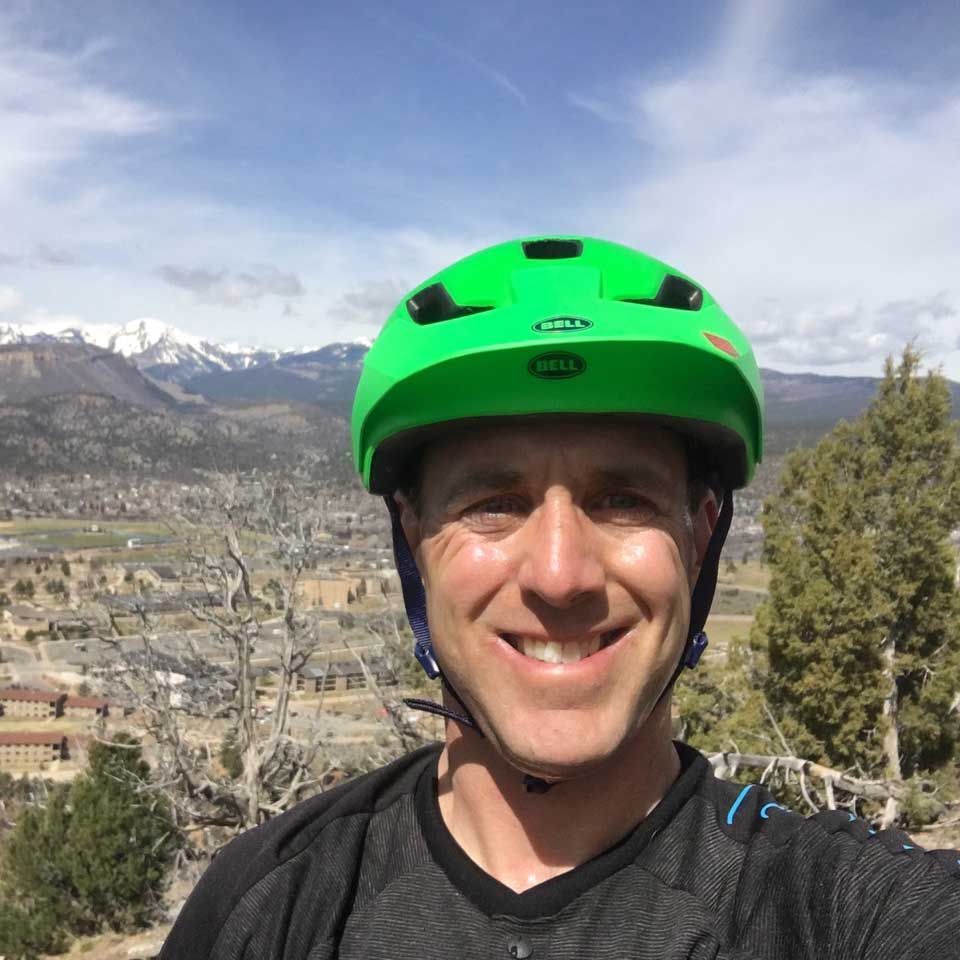
A gear editor for his entire career, Matt’s journey to becoming a leading cycling tech journalist started in 1995, and he’s been at it ever since; likely riding more cycling equipment than anyone on the planet along the way. Previous to his time with Bicycling, Matt worked in bike shops as a service manager, mechanic, and sales person. Based in Durango, Colorado, he enjoys riding and testing any and all kinds of bikes, so you’re just as likely to see him on a road bike dressed in Lycra at a Tuesday night worlds ride as you are to find him dressed in a full face helmet and pads riding a bike park on an enduro bike. He doesn’t race often, but he’s game for anything; having entered road races, criteriums, trials competitions, dual slalom, downhill races, enduros, stage races, short track, time trials, and gran fondos. Next up on his to-do list: a multi day bikepacking trip, and an e-bike race.
